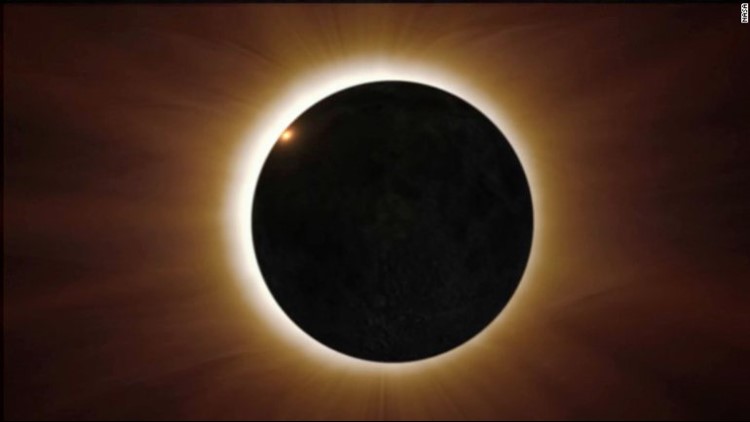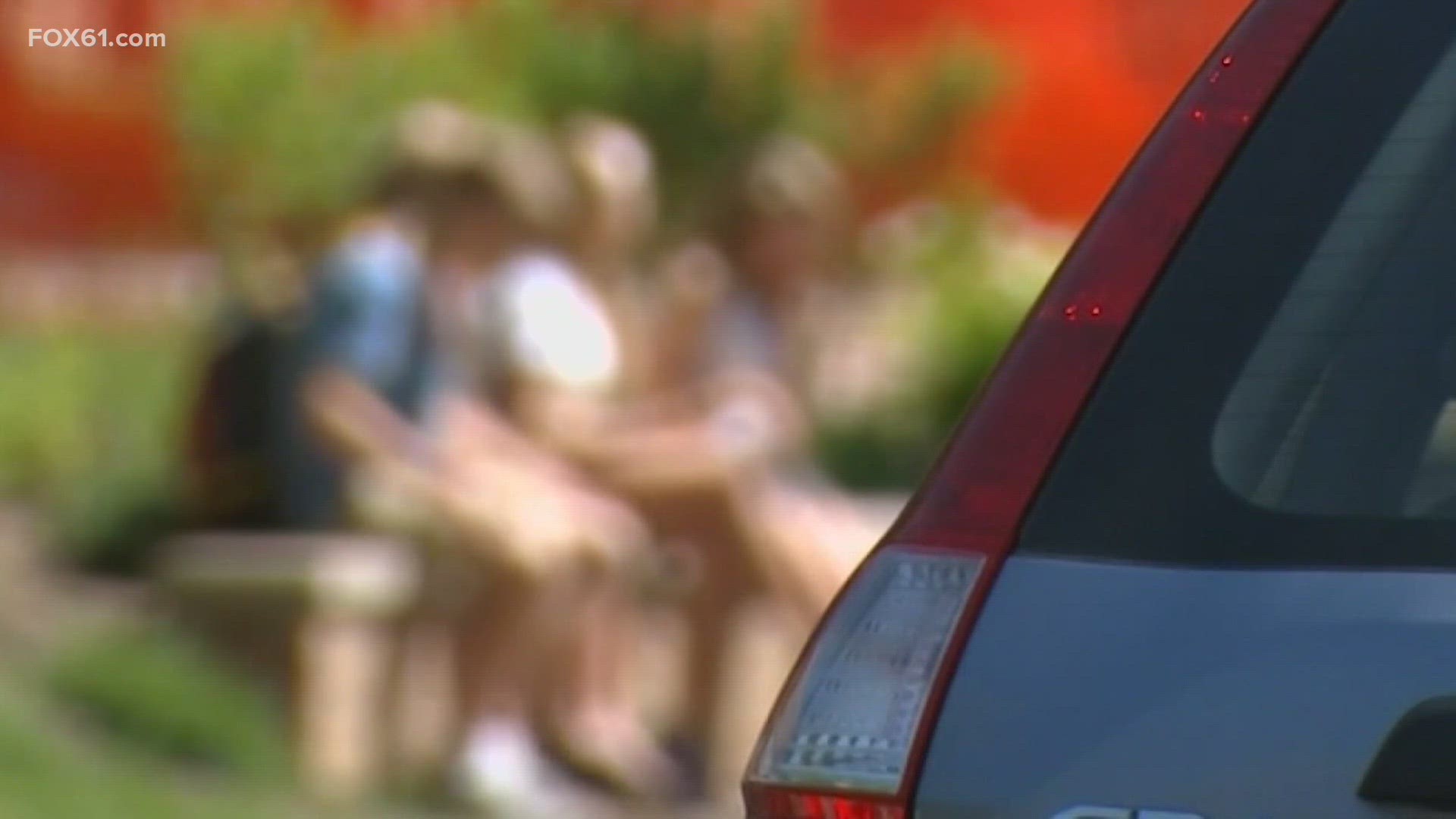On Monday, the moon’s shadow will block the sun from view in a total solar eclipse.
Wherever you are in the United States, you’re going to want to look up, and that’s OK. Every astronomer in the country will tell you to enjoy this rare opportunity. No matter what superstitions you’ve heard, there is no risk to your health due to simply being outside during a total solar eclipse.
There’s one thing you shouldn’t do, and that’s look at the sun with your naked eye.
Don’t do it. Really.
The only time you can look at the sun with your naked eye is A) if you’re in the path of totality, where the sun will be completely covered by the moon, and B) during those two minutes or less when the sun is completely covered.
During those brief and geographically constrained moments, the brightness of the sun is reduced to that of a full moon, which can be viewed safely without anything over your eyes.
Otherwise, any glimpse of the sun’s brightness is not only uncomfortable, it’s dangerous.
What happens if you ignore the warnings?
Your face won’t melt off, “Raiders of the Lost Ark”-style, but your eyes could be severely damaged. And, yes, you could go blind.
Looking directly at the powerful brightness of the sun can cause damage to the retina, the light-sensitive part of the eye.
“When you look directly at the sun, the intensity of the light and the focus of the light is so great on the retina that it can cook it,” said Dr. Christopher Quinn, president of the American Optometric Association. “If the exposure is great enough, that can and will lead to permanent reduction in vision and even blindness.”
The retina may translate light into an electrical impulse that the brain understands, but one thing it can’t translate to your brain is pain. So even if you’re excited about the eclipse and think one brief glimpse at the sun before it completely hides behind the moon is worth it — it’s not. There’s no internal trigger that is going to let you know that you’ve looked at the sun for too long. Any amount of looking at it is too long.
Even the smallest amount of exposure can cause blurry vision or temporary blindness. The problem is, you won’t know whether it’s temporary.
“It’s really impossible for people, when they’re in the moment, to make a judgment over brief versus prolonged exposure,” Quinn said. “It’s never a good idea to view the eclipse without the protection.”
Why you need eclipse glasses
No matter how cute or fancy they may be, wearing your favorite pair of sunglasses — or a whole stack of sunglasses, for any MacGyver wannabes out there — won’t help. You’ll need eclipse glasses, which are regulated by an international safety standard. They’re cheap and widely available, and some libraries are even providing them free.
Whether you use the cardboard eclipse glasses or a handheld card with a single rectangular view, the most important feature is the filter.
“Filters that meet the ISO 12312-2 standard reduce the sun’s brightness to a safe and comfortable level, like that of a full moon, and block harmful ultraviolet and infrared radiation as well,” said Rick Fienberg of the American Astronomical Society. “Solar filters that meet this standard are about 100,000 times darker than ordinary sunglasses, and sunglasses don’t block infrared radiation.”
Unsafe eclipse glasses bearing the ISO logo and certification label have been flooding the market, according the astronomical society. Websites are also displaying false results that claim to show positive test results for glasses they sell.
“The only way you can be sure your solar viewer is safe is to verify that it comes from a reputable manufacturer or one of their authorized dealers,” the society said in a recent release. The organization has a list it keeps updated.
To test for safety, the only thing you can see through a safe solar filter is the sun itself. If you look through and the sun is too bright, out of focus or surrounded by a murky haze, or if you can see things like ordinary household lights, the glasses aren’t safe.
If you’re tempted to reuse eclipse glasses that are three years or older, they were made before the international safety standard was in place and come with a warning that says you can’t look through them for more than three minutes at a time. These should be discarded, according to the astronomical society.
Eclipse glasses can be worn over regular eyeglasses, as well.
Viewing safety
If you plan on watching the eclipse through a camera, a telescope or binoculars, buy a solar filter to place on the end of the lens. But do not wear eclipse glasses while looking through any of these.
“The concentrated light from the optics will go right through the filters on the eclipse glasses and cause severe injury to the eye,” Fienberg said.
Binoculars do enable you to have an up-close view of the wonders of the eclipse, Fienberg said. Cheap solar filters are available to place on the binoculars, and you may remove them during totality, when the sun is completely blocked from view.
“During totality, the sun is ringed by this spectacular pearly white corona, a beautiful crown around the jet-black silhouette of the moon, with loops and streamers tracing the sun’s magnetic field and extending for several solar diameters in every direction,” Fienberg said.
Want to go old school and look through welding filters? Make sure they are Shade 12, 13 or 14 — although some people say Shade 12 leaves the sun too bright and Shade 14 makes the sun too dim, which leaves only the hard-to-find Shade 13 as the Goldilocks filter. Know that most welders’ helmets that might be lying around in garages probably won’t have those filters.
Here are safety tips to remember, according to the American Astronomical Society:
-
- Always inspect your solar filter before use; if it’s scratched, punctured, torn or otherwise damaged, discard it. Read and follow any instructions printed on or packaged with the filter.
- Always supervise children using solar filters.
- If you normally wear eyeglasses, keep them on. Put your eclipse glasses on over them, or hold your handheld viewer in front of them.
- Stand still and cover your eyes with your eclipse glasses or solar viewer before looking up at the bright sun. After looking at the sun, turn away and remove your filter; do not remove it while looking at the sun.
- Do not look at the uneclipsed or partially eclipsed sun through an unfiltered camera, telescope, binoculars or other optical device.
- Similarly, do not look at the sun through a camera, a telescope, binoculars or any other optical device while using your eclipse glasses or handheld solar viewer; the concentrated solar rays could damage the filter and enter your eyes, causing serious injury.
- Seek expert advice from an astronomer before using a solar filter with a camera, telescope, binoculars or any other optical device; note that solar filters must be attached to the front of any telescope, binoculars, camera lens or other optics.
- If you are inside the path of totality, remove your solar filter only when the moon completely covers the sun’s bright face and it suddenly gets quite dark.
- Experience totality and then, as soon as the bright sun begins to reappear, replace your solar viewer to look at the remaining partial phases.
- Outside the path of totality, you must always use a safe solar filter to view the sun directly.
How can kids watch?
Keep an eye on children and make sure they keep their glasses on at all times, perhaps helping to hold the glasses in place.
There are lots of ways to get your kids involved in the eclipse and all it has to offer. They can create their own “pinhole projection” by crossing the outstretched fingers of one hand over the other during the partial eclipse and enjoying the crescent suns that shine through the waffle-like pattern.
“One thing that always gets kids excited at a solar eclipse is to have them look at the shadow of a leafy tree during the partial phases,” Fienberg said. “They’ll see lots of little crescent suns projected on the ground by the tiny spaces between the leaves.”
One thing that people don’t need to worry about is shielding their pets from the eclipse. While animals may exhibit strange behavior during the eclipse, they know better — better than humans, anyway — than to look up.



